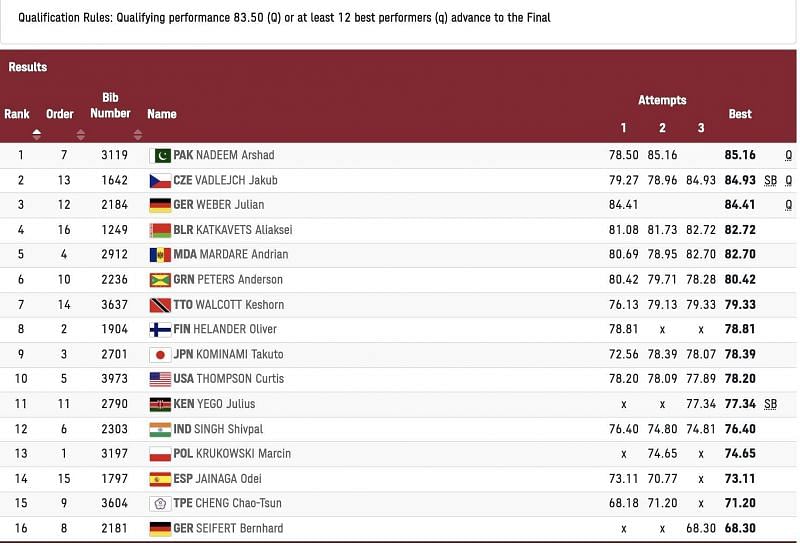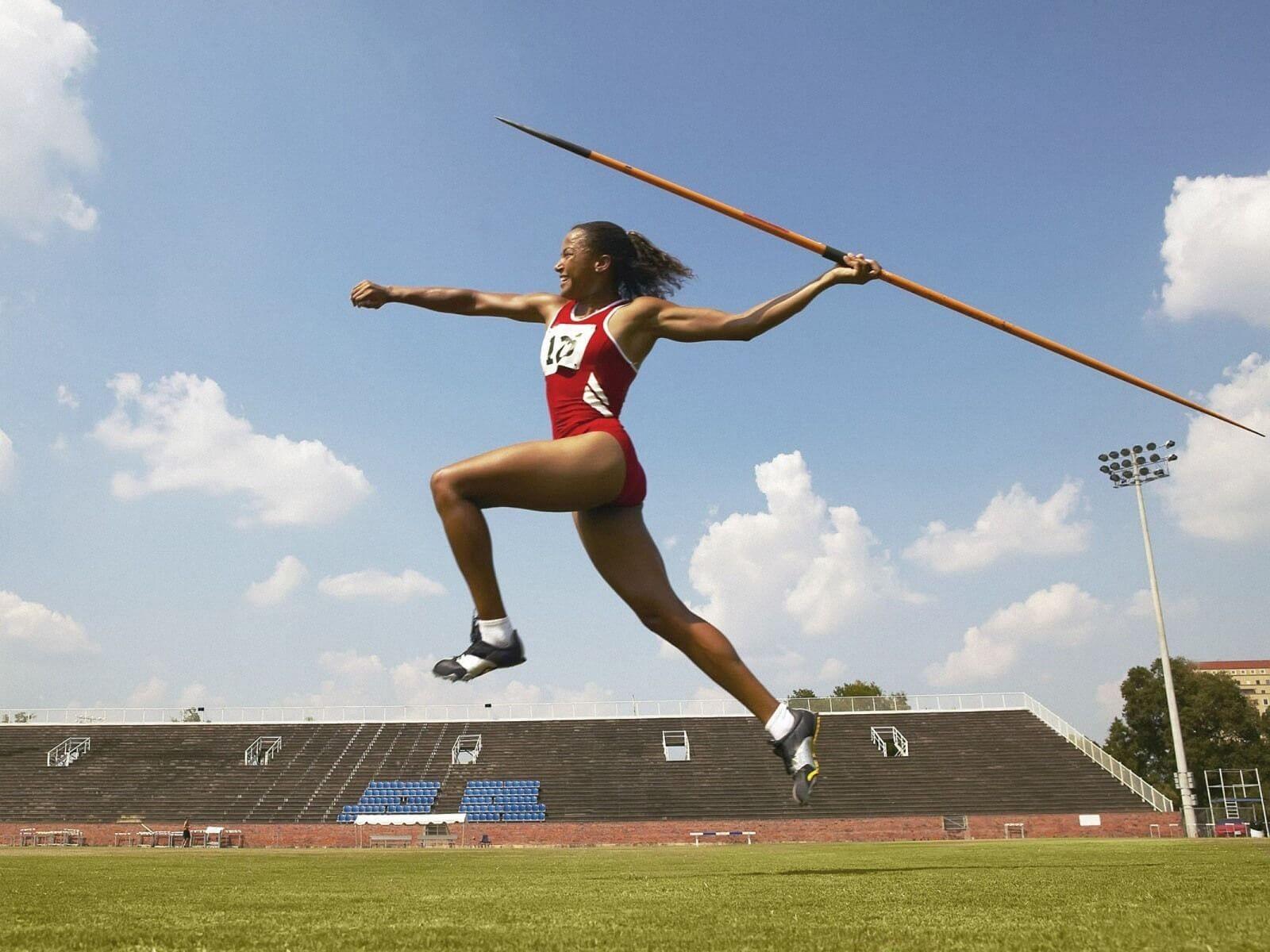Javelin Throw Techniques and Strategies

The javelin throw is a track and field event that requires a combination of speed, power, and accuracy. Athletes use different techniques to maximize their throw distance, each with its own advantages and disadvantages.
Throwing Techniques
The javelin throw involves three main phases: the run-up, the throw, and the follow-through. Each phase requires specific techniques and strategies to optimize performance.
- Run-up: The run-up is the initial phase of the throw, where the athlete gains momentum and prepares for the throw. The athlete typically runs in a straight line, gradually increasing speed, and then transitioning into a curved path. The length and curvature of the run-up vary depending on the athlete’s individual style and preferences. A well-executed run-up ensures a smooth transition into the throw, maximizing momentum and power.
- Throw: The throw is the core of the javelin throw, where the athlete launches the javelin with maximum force and accuracy. There are two main throwing techniques: the “overhand” and the “underhand” techniques.
- Overhand Technique: The overhand technique is the most common technique used in the javelin throw. In this technique, the athlete holds the javelin with the hand closest to the tip of the javelin, using the other hand for support. The athlete then swings the javelin in a backward arc, bringing it forward with a powerful thrust of the hips and shoulders, releasing the javelin at an optimal angle. The overhand technique is favored for its potential for generating higher throwing velocities, which translates to greater distances.
- Underhand Technique: The underhand technique is less common but still used by some athletes. In this technique, the athlete holds the javelin with both hands, using a more underhand motion to launch the javelin. The underhand technique is often used by athletes who find it more comfortable or who have specific physical limitations. While it may not achieve the same throwing velocities as the overhand technique, it can still be effective for achieving a good throw distance.
- Follow-through: The follow-through is the final phase of the throw, where the athlete continues the throwing motion after releasing the javelin. The follow-through helps maintain balance and control, ensuring a smooth and controlled release of the javelin. A proper follow-through can contribute to greater throwing distance by maintaining momentum and preventing unnecessary braking forces.
Factors Affecting Javelin Throw Distance
Several factors contribute to a successful javelin throw, including:
- Speed: Speed is crucial for generating momentum and power in the throw. A faster run-up and a powerful throwing motion are essential for maximizing throw distance.
- Power: Power is the ability to generate force, which is essential for propelling the javelin through the air. The thrower’s strength and explosiveness are crucial factors in determining the power of the throw.
- Accuracy: Accuracy is essential for achieving maximum distance. The thrower must release the javelin at the optimal angle and with the correct trajectory to ensure the javelin travels as far as possible.
- Technique: Proper technique is essential for maximizing the effectiveness of speed and power. A smooth and coordinated motion, from the run-up to the follow-through, ensures the javelin is released at the optimal angle and with maximum force.
- Javelin: The javelin itself plays a significant role in the throw distance. The weight, balance, and aerodynamic design of the javelin can affect its flight path and distance.
- Wind Conditions: Wind conditions can significantly impact the javelin’s flight path and distance. A tailwind can increase the javelin’s distance, while a headwind can reduce it.
Notable Javelin Throwers and Records: Athletics At The Summer Olympics – Javelin Throw Schedule

The javelin throw has seen some of the greatest athletes in history, pushing the limits of human strength and precision. From the legendary Jan Železný to the modern-day stars, these athletes have left an indelible mark on the sport.
Evolution of the World Record
The world record in the javelin throw has been broken multiple times throughout history, reflecting the continuous evolution of the sport. The record has been held by several legendary athletes, each contributing to the advancement of the discipline.
- 1956: The world record was initially set by the Finnish athlete Eino Pentikäinen, with a throw of 83.29 meters. This marked the beginning of a remarkable journey of pushing the boundaries of the javelin throw.
- 1960s: The record was then broken by the Soviet athlete Viktor Tsibulenko, who threw the javelin 86.04 meters in 1961. The 1960s saw several athletes from the Soviet Union and Finland break the record, highlighting the competitive spirit of the era.
- 1980s: The record was broken again in 1984 by Uwe Hohn, who threw the javelin 104.80 meters. This record stood for 23 years and is still considered one of the most remarkable achievements in the history of the javelin throw. Hohn’s throw was considered controversial as it came with the use of a javelin model that was subsequently deemed too aerodynamic and was banned.
- 1990s: The record was broken again by Jan Železný in 1996, who threw the javelin 98.48 meters. Železný dominated the javelin throw throughout the 1990s, winning three Olympic gold medals and setting numerous world records.
- 2000s: The current world record holder is Andreas Thorkildsen from Norway, who threw the javelin 91.57 meters in 2006. The record has remained unbroken since then, highlighting the incredible challenge of surpassing such a remarkable distance.
Top 10 Olympic Javelin Throwers, Athletics at the summer olympics – javelin throw schedule
The Olympic Games have witnessed some of the greatest javelin throwers in history. The following table highlights the top 10 Olympic javelin throwers based on their best performances in the Games:
| Rank | Athlete | Distance (m) | Year |
|---|---|---|---|
| 1 | Jan Železný (CZE) | 90.17 | 2000 |
| 2 | Andreas Thorkildsen (NOR) | 91.57 | 2008 |
| 3 | Steve Backley (GBR) | 89.12 | 1996 |
| 4 | Aki Parviainen (FIN) | 89.02 | 1996 |
| 5 | Tero Pitkämäki (FIN) | 89.00 | 2012 |
| 6 | Seppo Räty (FIN) | 88.66 | 1988 |
| 7 | Kimmo Kinnunen (FIN) | 88.19 | 1992 |
| 8 | Sergey Makarov (RUS) | 88.10 | 2000 |
| 9 | Boris Henry (GER) | 87.90 | 1984 |
| 10 | Tomáš Janík (CZE) | 87.66 | 2000 |
Athletics at the summer olympics – javelin throw schedule – The Summer Olympics javelin throw schedule is a thrilling spectacle of athletic prowess, showcasing the strength and precision of these athletes. It’s a reminder that athleticism can come in many forms, much like the diverse talents of individuals like hunter schafer , who has made a name for herself in acting and activism.
Whether it’s on the field or on the screen, these individuals inspire us with their dedication and passion, reminding us that excellence can be found in various pursuits.
The javelin throw schedule at the Summer Olympics is a captivating event, showcasing the strength and precision of athletes from around the globe. While watching these competitors launch the spear, it’s easy to get caught up in the drama and excitement, much like the whirlwind romance of dominic fike and hunter schafer , a Hollywood power couple that has captured the attention of fans worldwide.
However, as the competition heats up, all eyes will be on the athletes as they strive for gold in the javelin throw, reminding us of the dedication and skill required to reach the pinnacle of athletic achievement.
